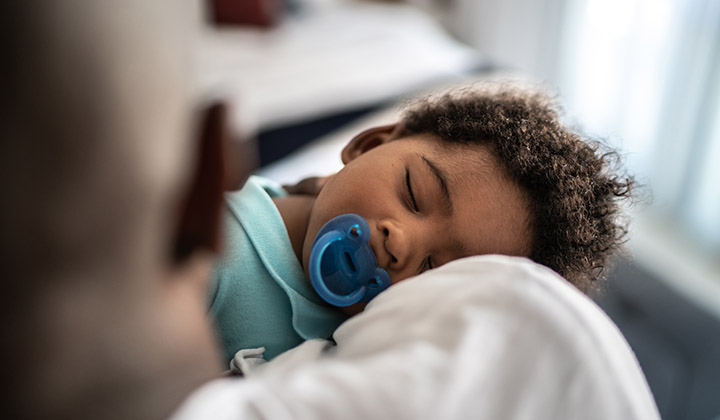Get updates
Have a parenting hack to share? Or a topic you'd like to see?
Saying goodbye to the pacifier: A gentle guide for parents

Let’s be real — pacifiers can be a lifesaver, especially in those early days. They help babies calm down, feel safe and sometimes stop a meltdown before it starts. But as your child grows, you might wonder when it’s time to let go of the pacifier. And how do you do it without a lot of tears?
Here’s a simple guide to help you through it.
Why babies love pacifiers
Babies have a strong need to suck, even when they’re not hungry. Pacifiers help meet that need. They’re also great for calming babies during doctor visits or helping preemie babies learn how to suck. Some studies even show pacifiers can lower the risk of Sudden Infant Death Syndrome (SIDS) when used safely during sleep.
So yes, pacifiers are helpful. But they’re not meant to be used forever.
When to start weaning
Most doctors say it’s best to start weaning between 6 and 12 months. After that, pacifiers can raise the chance of ear infections and cause problems with how the mouth grows. The American Academy of Pediatrics says to stop by 12 months, while the American Academy of Pediatric Dentistry says to stop by 18 months, and no later than age 3.
It is typically recommended to wean from the bottle around 12 months, and it can be helpful to wean from the pacifier at the same time as the bottle.
What happens if you wait too long
Using a pacifier too much after 18 months can change how your child’s teeth and mouth grow. It might cause problems like an open bite or a cross bite. It can also make it harder for your child to chew food or talk clearly.
But don’t worry too much. Talking, singing and reading with your child helps their speech more than just stopping the pacifier.
Signs it’s time to stop
Look for things like:
- Trouble talking or babbling
- Problems biting or chewing food
- Teeth that don’t line up right
If you see these signs, it might be time to say goodbye to the pacifier.
Easy ways to wean
Here are some tips that can help your child transition away from the pacifier:
For babies:
- Take the pacifier away when they’re calm.
- Use toys or rattles instead.
- Try a bedtime routine with a soft toy.
For toddlers:
- Pick a day to stop and talk about it.
- Trade the pacifier for a toy or let the “pacifier fairy” take it.
- Only use the pacifier at certain times or places.
- Praise your child when they go without it.
Helping your child feel safe
This change can be hard. Give your child hugs, soft toys and kind words. Let them know you’re proud of them. Celebrate small wins and remind them how grown-up they’re becoming.
Common myths
Let’s clear up a couple common myths:
1. Myth: Pacifiers make babies too tired to eat.
Truth: They help babies calm down so they can eat better.
2. Myth: Pacifiers confuse babies who use bottles.
Truth: It’s more about how fast the milk comes out than the shape of the nipple.
3. Myth: Thumb-sucking is better than pacifier use.
Truth: You can take a pacifier away, but thumbs are always there. Thumb-sucking can also cause mouth problems if it goes on too long.
Weaning from the pacifier doesn’t have to be scary. With love, patience and a few tricks, you can help your child move on. Every child is different, so trust yourself and ask for help if you need it.
